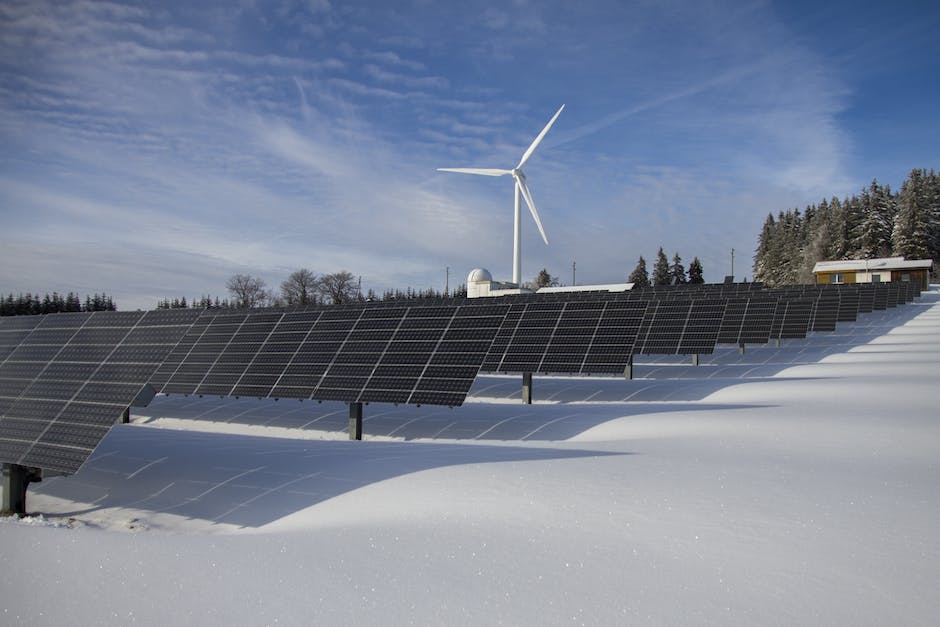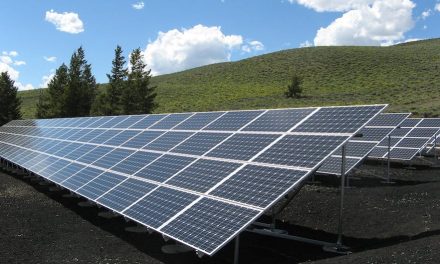Table of Contents
- Introduction
- The Role of Government Policies in Promoting Renewable Energy
- International Cooperation and Collaboration in Renewable Energy Initiatives
- Innovative Technologies and Solutions for a Sustainable Energy Future
- The Economic and Environmental Benefits of Investing in Renewable Energy
- Q&A
- Conclusion
“Empowering a Sustainable Tomorrow: World Leaders Paving the Way for Renewable Energy”
Introduction
World leaders play a crucial role in shaping the future of renewable energy. As the world faces the challenges of climate change and the need to transition to sustainable energy sources, these leaders are implementing policies, setting targets, and driving international cooperation to accelerate the adoption of renewable energy technologies. Their actions and commitments are instrumental in creating a sustainable and clean energy future for generations to come. In this article, we will explore how world leaders are actively shaping the future of renewable energy and the impact of their efforts on global energy transition.
The Role of Government Policies in Promoting Renewable Energy

The Role of Government Policies in Promoting Renewable Energy
Renewable energy has become a key focus for governments around the world as they strive to reduce carbon emissions and combat climate change. In order to achieve their renewable energy goals, governments have implemented various policies and initiatives to promote the development and adoption of renewable energy sources. These policies play a crucial role in shaping the future of renewable energy.
One of the most common government policies is the implementation of renewable energy targets. These targets set specific goals for the percentage of energy that must come from renewable sources by a certain date. By setting these targets, governments create a clear roadmap for the transition to renewable energy and provide a sense of direction for both investors and industry stakeholders. These targets also serve as a signal to the market, encouraging investment in renewable energy technologies and infrastructure.
To support the achievement of these targets, governments often provide financial incentives for renewable energy projects. These incentives can take the form of tax credits, grants, or subsidies, which help to offset the higher upfront costs associated with renewable energy technologies. By reducing the financial barriers to entry, governments make renewable energy more attractive to investors and stimulate the growth of the industry. These incentives also help to level the playing field between renewable energy and traditional fossil fuel sources, which have historically received significant government subsidies.
In addition to financial incentives, governments also play a role in promoting renewable energy through regulatory policies. These policies can include feed-in tariffs, which require utilities to purchase renewable energy at a fixed price, or renewable portfolio standards, which mandate that a certain percentage of a utility’s energy mix must come from renewable sources. By implementing these policies, governments create a guaranteed market for renewable energy and provide a stable revenue stream for renewable energy producers. This stability is crucial for attracting investment and driving innovation in the renewable energy sector.
Furthermore, governments can also promote renewable energy through research and development (R&D) funding. By investing in R&D, governments support the development of new and more efficient renewable energy technologies. This funding can be used to support basic research, as well as the commercialization of promising technologies. By driving innovation in the renewable energy sector, governments help to reduce costs and improve the performance of renewable energy technologies, making them more competitive with traditional energy sources.
Finally, governments can also play a role in promoting renewable energy through international cooperation and collaboration. Through international agreements and partnerships, governments can share best practices, exchange knowledge, and coordinate efforts to accelerate the deployment of renewable energy worldwide. These collaborations can help to overcome common challenges, such as grid integration and energy storage, and foster the development of a global renewable energy market.
In conclusion, government policies play a crucial role in shaping the future of renewable energy. By setting targets, providing financial incentives, implementing regulatory policies, investing in R&D, and promoting international cooperation, governments can create an enabling environment for the development and adoption of renewable energy sources. These policies not only help to reduce carbon emissions and combat climate change but also drive economic growth, create jobs, and enhance energy security. As the world continues to grapple with the challenges of climate change, the role of government policies in promoting renewable energy will only become more important.
International Cooperation and Collaboration in Renewable Energy Initiatives
International Cooperation and Collaboration in Renewable Energy Initiatives
Renewable energy has become a global priority as world leaders recognize the urgent need to transition away from fossil fuels and reduce greenhouse gas emissions. In order to effectively address the challenges of climate change and ensure a sustainable future, international cooperation and collaboration in renewable energy initiatives have become crucial.
One of the key reasons why international cooperation is essential in the field of renewable energy is the shared nature of the problem. Climate change knows no borders, and its impacts are felt by all nations. Therefore, it is imperative that countries work together to find solutions and share best practices. By collaborating, countries can pool their resources, knowledge, and expertise to accelerate the development and deployment of renewable energy technologies.
The Paris Agreement, signed by 195 countries in 2015, is a prime example of international cooperation in renewable energy. The agreement aims to limit global warming to well below 2 degrees Celsius above pre-industrial levels and to pursue efforts to limit the temperature increase to 1.5 degrees Celsius. Under the agreement, countries have committed to reducing their greenhouse gas emissions and increasing their use of renewable energy sources.
To achieve these goals, countries have been engaging in various collaborative initiatives. For instance, the International Renewable Energy Agency (IRENA) serves as a platform for countries to exchange knowledge and experiences in renewable energy. It provides technical assistance, policy advice, and capacity building support to its member states. Through IRENA, countries can learn from each other’s successes and failures, and develop effective strategies for renewable energy deployment.
Another example of international collaboration is the Mission Innovation initiative. Launched in 2015, Mission Innovation brings together 24 countries and the European Union to accelerate clean energy innovation. Participating countries have committed to doubling their public investment in clean energy research and development over five years. By sharing research findings and collaborating on innovative projects, these countries aim to drive down the costs of renewable energy technologies and make them more accessible to all.
Furthermore, regional cooperation has also played a significant role in advancing renewable energy. The European Union, for instance, has set ambitious targets for renewable energy deployment and has established a framework for cooperation among its member states. Through initiatives such as the European Green Deal, the EU aims to become the world’s first climate-neutral continent by 2050. By working together, European countries can leverage their collective resources and expertise to accelerate the transition to renewable energy.
In addition to government-led initiatives, international organizations and non-governmental organizations (NGOs) have also been instrumental in promoting international cooperation in renewable energy. For example, the United Nations Development Programme (UNDP) has been supporting countries in developing renewable energy projects and strengthening their capacities. NGOs such as Greenpeace and WWF have been advocating for renewable energy policies and raising awareness about the benefits of clean energy.
In conclusion, international cooperation and collaboration in renewable energy initiatives are crucial for shaping the future of renewable energy. By working together, countries can accelerate the development and deployment of renewable energy technologies, share best practices, and drive down costs. Initiatives such as the Paris Agreement, IRENA, Mission Innovation, and regional cooperation efforts have demonstrated the power of collaboration in addressing the challenges of climate change. With continued international cooperation, the world can move closer to a sustainable and clean energy future.
Innovative Technologies and Solutions for a Sustainable Energy Future
How World Leaders are Shaping the Future of Renewable Energy
Innovative Technologies and Solutions for a Sustainable Energy Future
Renewable energy has become a global priority as world leaders recognize the urgent need to transition away from fossil fuels and reduce greenhouse gas emissions. With the threat of climate change looming large, governments and organizations are investing heavily in innovative technologies and solutions to shape a sustainable energy future.
One of the key players in this movement is the European Union (EU), which has set ambitious targets to increase the share of renewable energy in its overall energy consumption. The EU aims to achieve a 32% renewable energy target by 2030, and it has implemented various policies and initiatives to support this goal. These include the Renewable Energy Directive, which sets binding targets for member states, and the Clean Energy Package, which promotes the use of renewable energy in heating and cooling, transportation, and electricity generation.
Another leader in renewable energy is China, the world’s largest emitter of greenhouse gases. China has made significant investments in renewable energy, particularly in solar and wind power. The country has become a global leader in solar panel production and has installed the largest capacity of wind power in the world. China’s commitment to renewable energy is evident in its Five-Year Plans, which outline specific targets for renewable energy development and investment.
The United States, despite recent policy changes, remains a major player in renewable energy. Many states have implemented their own renewable energy targets and incentives, leading to significant growth in the sector. Additionally, corporations and cities across the country are committing to 100% renewable energy goals. While federal policies may have shifted, the momentum for renewable energy continues to grow at the state and local levels.
Innovation is driving the future of renewable energy, and world leaders are investing in research and development to accelerate progress. One area of focus is energy storage, which is crucial for integrating intermittent renewable energy sources into the grid. Advanced battery technologies, such as lithium-ion batteries, are becoming more efficient and affordable, enabling the storage of excess renewable energy for use during periods of high demand.
Another innovative technology is floating offshore wind farms, which have the potential to harness strong winds in deep waters where traditional fixed-bottom wind turbines are not feasible. Countries like Scotland and Japan are leading the way in developing floating offshore wind projects, which could significantly increase the capacity for wind power generation.
Furthermore, world leaders are exploring the potential of hydrogen as a clean energy source. Hydrogen can be produced from renewable sources and used as a fuel for transportation, heating, and electricity generation. Countries like Germany and Japan are investing in hydrogen infrastructure and pilot projects to test its viability as a renewable energy solution.
Collaboration between countries is also crucial for shaping the future of renewable energy. The International Renewable Energy Agency (IRENA) facilitates global cooperation and knowledge sharing in the renewable energy sector. Through initiatives like the Clean Energy Ministerial and the Mission Innovation, countries are working together to accelerate the deployment of renewable energy technologies and drive down costs.
In conclusion, world leaders are taking decisive actions to shape the future of renewable energy. Through ambitious targets, policies, and investments, countries like the EU, China, and the United States are driving the transition towards a sustainable energy future. Innovation in technologies such as energy storage, floating offshore wind farms, and hydrogen is further propelling the growth of renewable energy. Collaboration between nations is essential to share knowledge and resources, ensuring a collective effort to combat climate change and secure a cleaner, greener future for generations to come.
The Economic and Environmental Benefits of Investing in Renewable Energy
The economic and environmental benefits of investing in renewable energy have become increasingly apparent in recent years. As world leaders recognize the urgent need to transition away from fossil fuels, they are taking significant steps to shape the future of renewable energy. This article will explore the various ways in which these leaders are driving change and the positive impact it is having on both the economy and the environment.
One of the key economic benefits of investing in renewable energy is the creation of jobs. As countries shift their focus towards renewable sources such as solar and wind power, new industries are emerging, leading to job growth in these sectors. According to a report by the International Renewable Energy Agency (IRENA), the renewable energy sector employed over 11 million people worldwide in 2018, a 6% increase from the previous year. This not only provides employment opportunities but also stimulates economic growth and reduces dependence on traditional energy sources.
Furthermore, investing in renewable energy can lead to cost savings in the long run. While the initial investment may be higher compared to traditional energy sources, the operational costs of renewable energy systems are significantly lower. Solar and wind power, for example, have no fuel costs and require minimal maintenance. As a result, countries that heavily rely on renewable energy can reduce their energy bills and allocate those savings towards other important areas such as education and healthcare.
In addition to the economic benefits, investing in renewable energy also has a positive impact on the environment. Fossil fuels are major contributors to greenhouse gas emissions, which are responsible for climate change. By transitioning to renewable energy sources, countries can significantly reduce their carbon footprint and mitigate the effects of global warming. This is particularly important as the world faces the consequences of climate change, such as rising sea levels, extreme weather events, and loss of biodiversity.
World leaders are playing a crucial role in shaping the future of renewable energy through policy initiatives and international agreements. The Paris Agreement, signed by 195 countries in 2015, aims to limit global warming to well below 2 degrees Celsius above pre-industrial levels. This agreement has spurred countries to set renewable energy targets and develop strategies to achieve them. For example, Germany has set a goal to generate 65% of its electricity from renewable sources by 2030, while Denmark aims to be carbon-neutral by 2050.
Moreover, world leaders are also investing in research and development to drive innovation in renewable energy technologies. Governments are providing funding and incentives to support the development of more efficient solar panels, wind turbines, and energy storage systems. This not only improves the performance and affordability of renewable energy systems but also encourages private sector investment in these technologies.
In conclusion, the economic and environmental benefits of investing in renewable energy are undeniable. World leaders are taking significant steps to shape the future of renewable energy through job creation, cost savings, and environmental protection. By transitioning away from fossil fuels and embracing renewable energy sources, countries can not only stimulate economic growth but also combat climate change and create a sustainable future for generations to come.
Q&A
1. How are world leaders shaping the future of renewable energy?
World leaders are implementing policies and regulations to promote the use of renewable energy sources, investing in research and development, and setting targets for increasing the share of renewable energy in their countries’ energy mix.
2. What policies and regulations are being implemented by world leaders to promote renewable energy?
World leaders are implementing feed-in tariffs, renewable portfolio standards, tax incentives, and carbon pricing mechanisms to encourage the adoption and development of renewable energy technologies.
3. How are world leaders investing in research and development for renewable energy?
World leaders are allocating funds for research and development in renewable energy technologies, supporting innovation and collaboration between public and private sectors, and establishing research centers and institutes focused on renewable energy.
4. What targets are world leaders setting to increase the share of renewable energy?
World leaders are setting targets to increase the share of renewable energy in their countries’ energy mix, such as aiming for a certain percentage of renewable energy generation by a specific year or committing to carbon neutrality by a certain date.
Conclusion
In conclusion, world leaders play a crucial role in shaping the future of renewable energy. Through policy decisions, investments, and international collaborations, they have the power to accelerate the transition towards a sustainable energy system. By prioritizing renewable energy sources, leaders can drive innovation, create jobs, reduce greenhouse gas emissions, and mitigate the impacts of climate change. However, continued commitment and collaboration among world leaders are essential to overcome challenges and ensure a sustainable and clean energy future for generations to come.




